Do you spend a lot of time sitting in front of a computer? If so, you may be putting your health and productivity at risk. Poor posture, inadequate support, and discomfort can lead to various problems such as back pain, neck pain, shoulder pain, headaches, eye strain, fatigue, and stress. These problems can affect your mood, performance, and quality of life.
That’s why you need an ergonomic computer chair. An ergonomic computer chair is a chair that is designed to fit your body and your work environment. It can help you maintain good posture, support your spine, and provide comfort and ease of movement. It can also help you prevent or reduce the negative effects of prolonged sitting.
But how do you choose the best ergonomic computer chair for your needs? What are the main features and criteria to look for? How do you use and maintain your ergonomic computer chair properly? These are some of the questions that this article will answer. The purpose of this article is to provide you with a comprehensive guide on how to select, use, and care for your ergonomic computer chair. By following this guide, you will be able to:
- Learn about the benefits of ergonomic computer chairs for your health and productivity.
- Understand the main features and criteria of ergonomic computer chairs, and how to adjust them to fit your body and your workstation.
- Discover the best practices and tips on how to use and maintain your ergonomic computer chair effectively.
- Find answers to some frequently asked questions about ergonomic computer chairs.
- Explore some of the best models and brands of ergonomic computer chairs available in the market.
So, if you are ready to improve your health and productivity with an ergonomic computer chair, read on and find out how.
Main Features of Ergonomic Computer Chairs
One of the most important aspects of choosing an ergonomic computer chair is to understand its main features and how they affect your comfort and support. An ergonomic computer chair should have the following features, and you should be able to adjust them according to your body and your workstation:
- Adjustable height: The height of your ergonomic computer chair should match your leg length and your desk height. You should be able to adjust the seat height so that your feet are flat on the floor, your knees are at a 90-degree angle, and your thighs are parallel to the floor. This will help you avoid pressure on your lower back and legs, and improve your blood circulation. To adjust the seat height, you can use a lever or a button under the seat, depending on the model of your ergonomic computer chair. [Best ergonomic office chairs 2024, tried and tested for comfort and support] provides some examples and recommendations of ergonomic computer chairs with adjustable height, such as the Cooler Master Ergo L and the Herman Miller Embody.
- Adjustable seat depth: The seat depth of your ergonomic computer chair should provide optimal thigh support and prevent pressure behind your knees. You should be able to adjust the seat depth so that there is a gap of about two to four fingers between the edge of the seat and the back of your knees. This will help you distribute your weight evenly on the seat and avoid slouching or sliding forward. To adjust the seat depth, you can use a knob or a slider under the seat, depending on the model of your ergonomic computer chair. [The 8 characteristics of a good ergonomic chair] explains why seat depth is important and how to measure it correctly.
- Adjustable seat tilt: The seat tilt of your ergonomic computer chair should promote a neutral pelvis position and allow you to sit on your “sit bones”. You should be able to adjust the seat tilt so that the front of the seat is slightly lower than the back, creating a slight downward slope. This will help you align your spine and avoid rounding your lower back or arching your lower back too much. To adjust the seat tilt, you can use a lever or a button under the seat, depending on the model of your ergonomic computer chair. [The 8 characteristics of a good ergonomic chair] shows how to adjust the seat tilt and how it affects your posture.
QYXXSK Oversized Comfortable Office Chair
LIUZH Home Internet Cafe Racing Chair
Office Computer Chair Comfortable Gaming
Ergonomic Reclining Office Boss Chair
- Adjustable back rest: The back rest of your ergonomic computer chair should support the natural curve of your spine and allow you to recline comfortably. You should be able to adjust the back rest so that it follows the shape of your back, from your lower back to your upper back, and provides firm but gentle pressure. You should also be able to adjust the angle of the back rest, so that you can recline between 90 and 120 degrees, depending on your preference and task. This will help you relax your muscles and joints, and reduce the risk of back pain and stiffness. To adjust the back rest, you can use a knob or a lever behind the back rest, depending on the model of your ergonomic computer chair. [The 8 characteristics of a good ergonomic chair] illustrates how to adjust the back rest and how it affects your comfort and support.

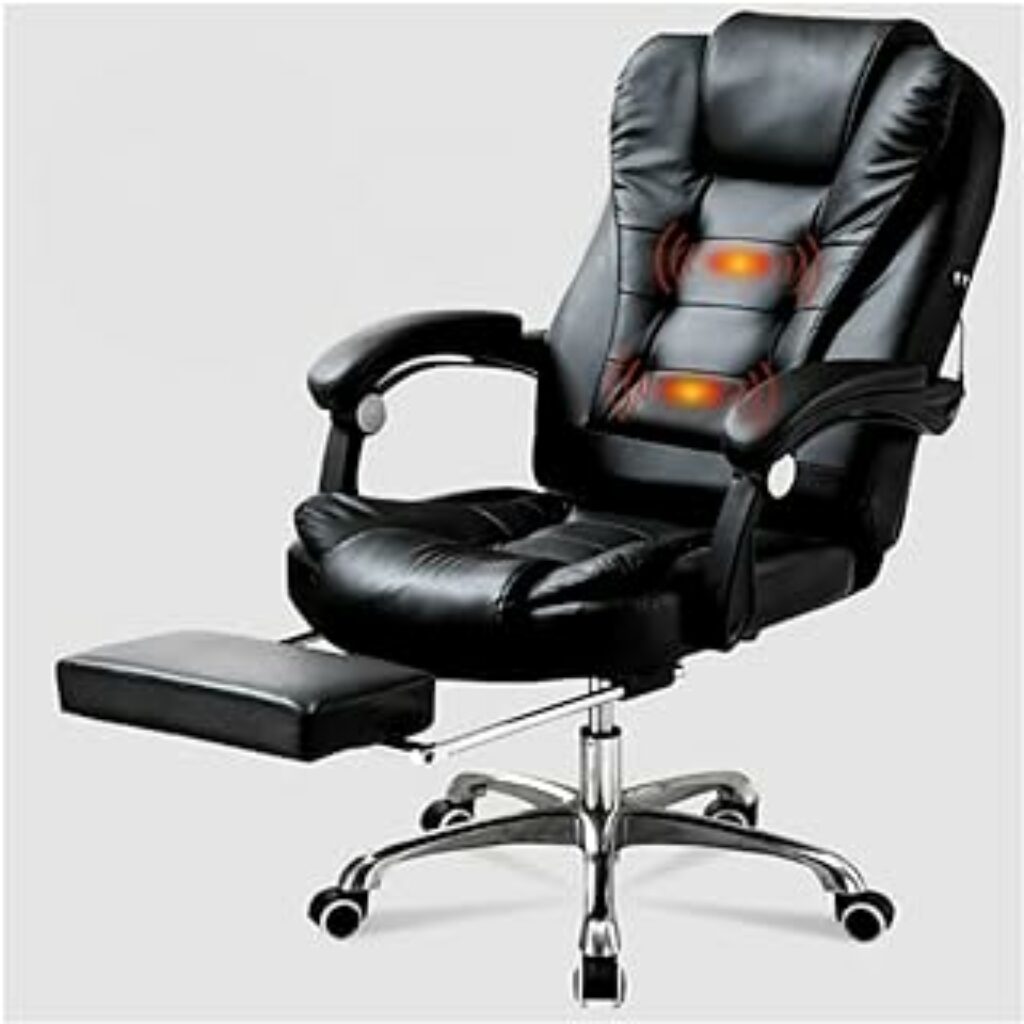
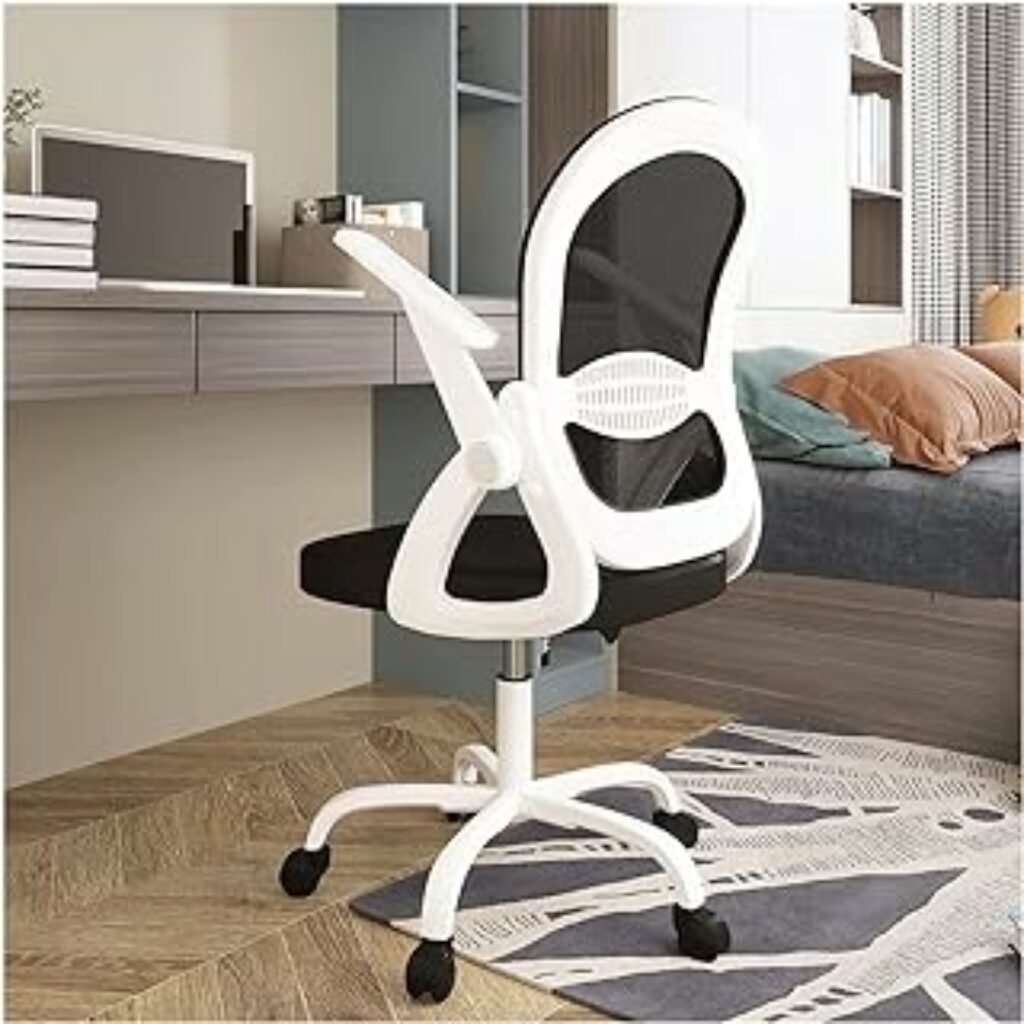
- Adjustable lumbar support: The lumbar support of your ergonomic computer chair should fit your lower back shape and prevent slouching. You should be able to adjust the lumbar support so that it fills the gap between your lower back and the back rest, and provides adequate pressure and cushioning. You should also be able to adjust the height and depth of the lumbar support, so that it targets the right area of your lower back, usually around the level of your belly button. This will help you maintain the natural curve of your spine and avoid lower back pain and fatigue. To adjust the lumbar support, you can use a knob or a slider behind the back rest, depending on the model of your ergonomic computer chair. [The 8 characteristics of a good ergonomic chair] demonstrates how to adjust the lumbar support and how it affects your posture and alignment.
- Adjustable arm rests: The arm rests of your ergonomic computer chair should support your arms and shoulders and reduce strain on your neck and wrists. You should be able to adjust the arm rests so that they are at the same level as your desk, and your elbows are at a 90-degree angle. You should also be able to adjust the width and angle of the arm rests, so that they are close to your body and your wrists are in a neutral position. This will help you avoid shoulder shrugging, neck tension, and wrist pain. To adjust the arm rests, you can use a button or a lever under the arm rests, depending on the model of your ergonomic computer chair. [The 8 characteristics of a good ergonomic chair] explains how to adjust the arm rests and how they affect your comfort and support.
- Adjustable head rest: The head rest of your ergonomic computer chair should support your head and neck and prevent forward head posture. You should be able to adjust the head rest so that it is slightly above the level of your ears, and your chin is parallel to the floor. You should also be able to adjust the angle and depth of the head rest, so that it cradles your head and neck gently and prevents them from tilting forward or backward. This will help you avoid neck pain, headaches, and eye strain. To adjust the head rest, you can use a knob or a slider behind the head rest, depending on the model of your ergonomic computer chair. [The Best Office Chairs for Working From Home] provides some examples and recommendations of ergonomic computer chairs with adjustable head rest, such as the Secretlab Titan EVO and the Humanscale Freedom Headrest.
- Material and padding: The material and padding of your ergonomic computer chair should suit your preference, comfort, and climate. You should be able to choose the material and padding that are durable, breathable, and easy to clean. Some of the common materials and padding for ergonomic computer chairs are leather, mesh, fabric, and foam. Each of them has its own advantages and disadvantages, such as:
- Leather: Leather is a luxurious and elegant material that is soft and smooth to the touch. It is also durable and easy to clean, as it can resist stains and spills. However, leather can also be expensive, heavy, and prone to cracking and fading. It can also be uncomfortable in hot and humid climates, as it can make you sweat and stick to the seat. [Best ergonomic office chairs 2024, tried and tested for comfort and support] features some ergonomic computer chairs with leather material, such as the Boulies BS11 Pro and the Hbada Ergonomic Office Chair.
- Comfortable Swivel Gaming Chair Point Massage — $18,585.50
-
Office Computer Chair Comfortable Gaming
—
$18,692.52
$19,865.99
- Mesh: Mesh is a lightweight and breathable material that is flexible and supportive. It can allow air circulation and prevent heat and moisture buildup. It can also adapt to your body shape and provide even pressure distribution. However, mesh can also be fragile and prone to tearing and snagging. It can also be hard to clean, as it can trap dust and dirt. It can also be uncomfortable in cold climates, as it can make you feel chilly and damp. [The Best Office Chairs for Working From Home] features some ergonomic computer chairs with mesh material, such as the Herman Miller Mirra 2 and the Flexispot Path.
- Fabric: Fabric is a versatile and affordable material that is soft and cozy to the touch. It can also come in various colors and patterns, and provide a warm and inviting look. However, fabric can also be prone to staining and fading, and difficult to clean. It can also absorb odors and allergens, and cause skin irritation. It can also be uncomfortable in hot and humid climates, as it can make you sweat and feel sticky. [The 7 Best Ergonomic Office Chairs of 2024] features some ergonomic computer chairs with fabric material, such as the Logitech Ergo K860 and the Radcliffe Office Chair.
- Foam: Foam is a cushioning and supportive material that is firm and comfortable. It can also conform to your body shape and provide pressure relief. However, foam can also be prone to sagging and flattening, and lose its shape and support over time. It can also be hot and humid, as it can trap heat and moisture. It can also be heavy and bulky, and difficult to move. [The 7 Best Ergonomic Office Chairs of 2024] features some ergonomic computer chairs with foam material, such as the Vantum EP200 and the Caliber X2.
These are the main features of ergonomic computer chairs that you should consider when choosing one for your needs. By adjusting these features to fit your body and your workstation, you can enjoy the maximum comfort and support that an ergonomic computer chair can offer. In the next part, we will discuss how to use and maintain your ergonomic computer chair properly, and how to avoid some common mistakes and problems.
How to Use and Maintain Ergonomic Computer Chairs
Choosing and adjusting an ergonomic computer chair is not enough to enjoy its full benefits. You also need to know how to use and maintain your ergonomic computer chair properly, and how to avoid some common mistakes and problems. In this part, we will provide you with some tips and best practices on how to use and maintain your ergonomic computer chair effectively, and how to improve your health and productivity while sitting.
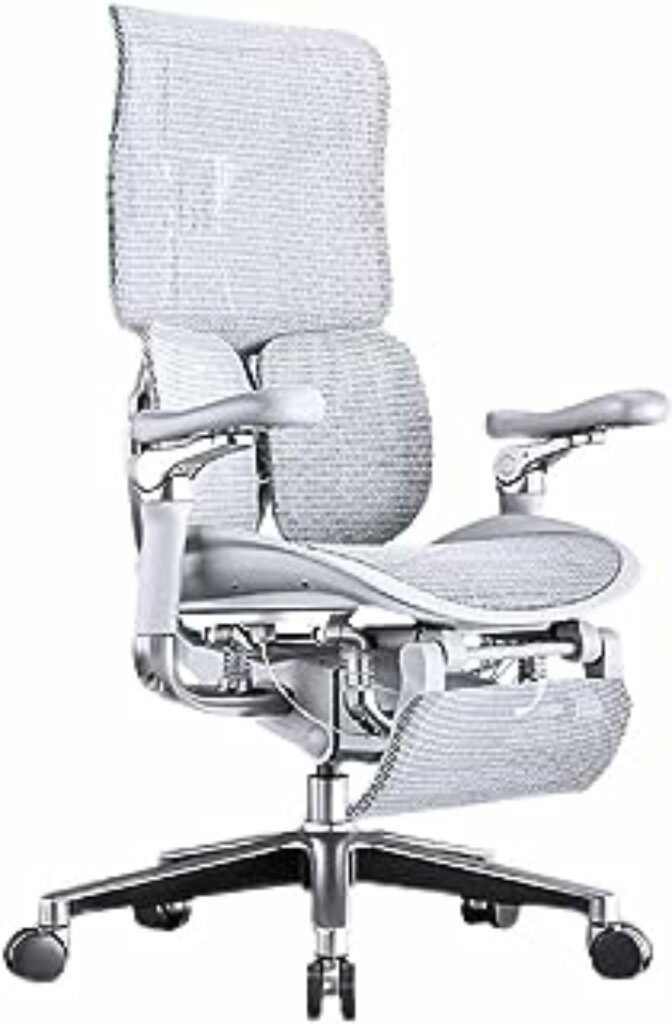
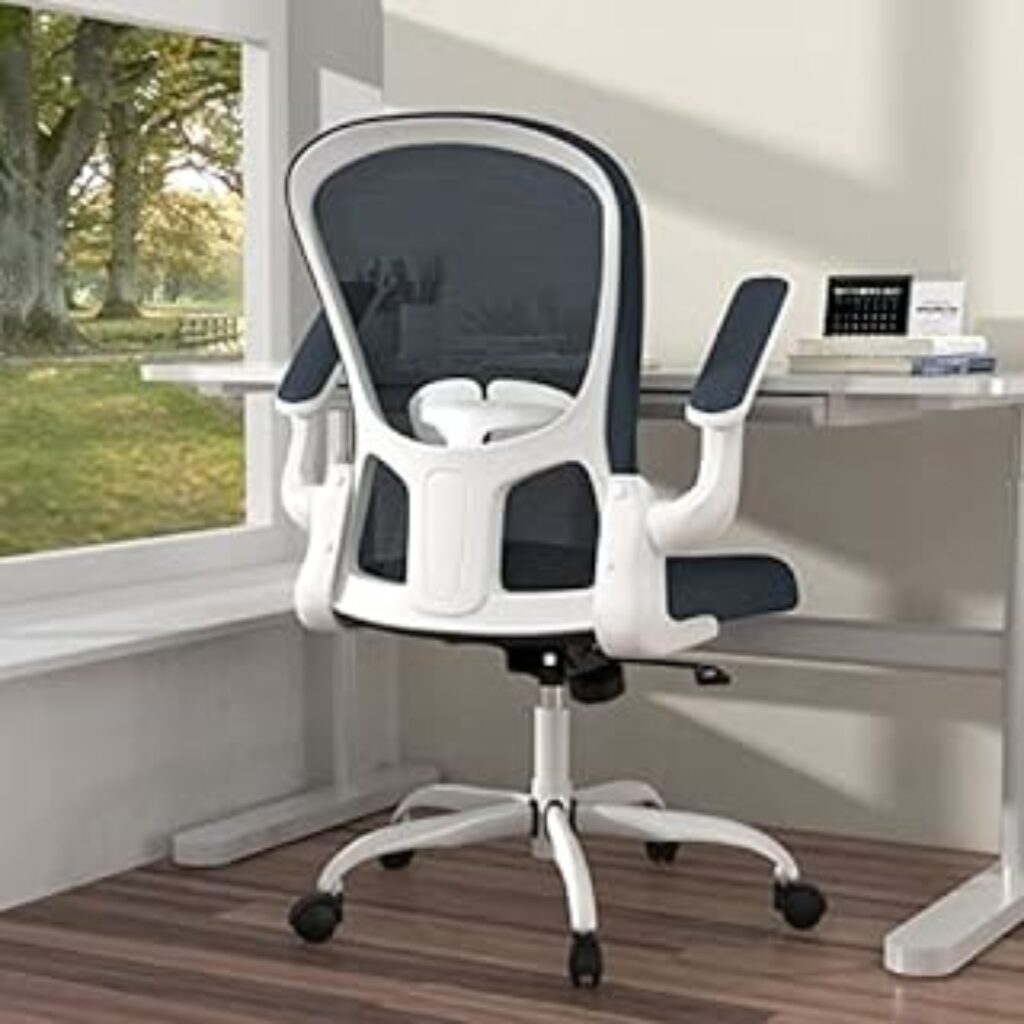
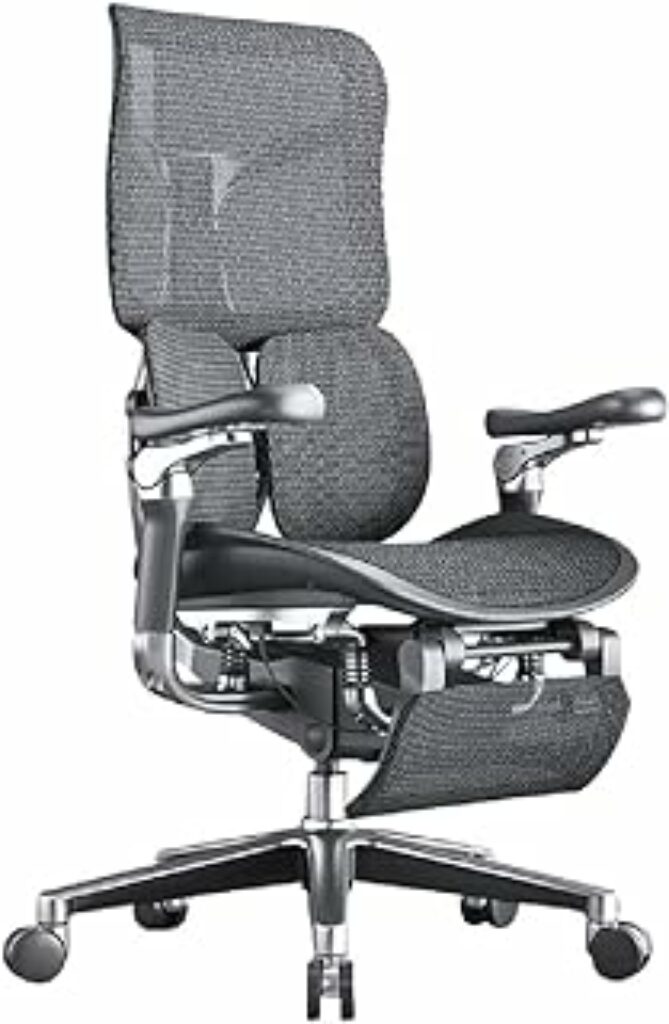
How to Use Your Ergonomic Computer Chair Properly
Using your ergonomic computer chair properly means following some simple guidelines and habits that can help you optimize your comfort and support. Here are some of them:
- Set up your chair according to your body measurements and workstation layout: Before you start using your ergonomic computer chair, you need to set it up according to your body measurements and workstation layout. This means adjusting the height, depth, tilt, back rest, lumbar support, arm rests, and head rest of your chair to fit your body and your desk. You can use a tape measure or a ruler to measure your body and your desk, and then use the levers, knobs, buttons, or sliders under or behind your chair to adjust the features accordingly. You can also use a mirror or a camera to check your posture and alignment, and make sure that you are sitting correctly. [7 Things You Need for an Ergonomically Correct Workstation] provides some useful tips and instructions on how to set up your chair and your workstation properly.
- Sit with good posture and alignment, avoiding common mistakes: Once you have set up your chair, you need to sit with good posture and alignment, avoiding common mistakes that can compromise your comfort and support. Some of these mistakes are:
- Crossing your legs: Crossing your legs can restrict your blood circulation and cause pressure on your lower back and hips. It can also make you lean to one side, which can affect your spine alignment and balance. Instead, you should keep your feet flat on the floor, your knees at a 90-degree angle, and your thighs parallel to the floor.
- Leaning forward: Leaning forward can cause you to hunch your shoulders, round your lower back, and tilt your head forward. This can lead to neck pain, shoulder pain, back pain, and eye strain. It can also reduce your lung capacity and oxygen intake, which can affect your energy and concentration. Instead, you should keep your back against the back rest, your spine aligned, and your head and neck in a neutral position.
- Hunching your shoulders: Hunching your shoulders can cause you to tense your muscles and joints, and compress your nerves and blood vessels. This can lead to shoulder pain, neck pain, headaches, and numbness or tingling in your arms and hands. It can also affect your breathing and mood, as it can make you feel stressed and anxious. Instead, you should relax your shoulders, keep them down and back, and use the arm rests to support your arms and shoulders.
- These are just some of the common mistakes that you should avoid when sitting in your ergonomic computer chair. [The 8 characteristics of a good ergonomic chair] explains more about these mistakes and how to correct them.
- Adjust your chair throughout the day to accommodate different tasks and preferences: Using your ergonomic computer chair properly also means adjusting it throughout the day to accommodate different tasks and preferences. This means changing the settings of your chair according to the type of work you are doing, the level of comfort you need, and the time of the day. For example, you may want to:
- Increase the seat height and tilt when you are working on a laptop or a tablet, as this can help you keep your wrists and elbows in a neutral position and prevent wrist pain and carpal tunnel syndrome.
- Decrease the seat height and tilt when you are working on a desktop or a monitor, as this can help you keep your eyes and head in a neutral position and prevent eye strain and neck pain.
- Increase the back rest angle and lumbar support when you are reading or relaxing, as this can help you recline comfortably and reduce the pressure on your spine and discs.
- Decrease the back rest angle and lumbar support when you are writing or typing, as this can help you sit upright and maintain your spine alignment and stability.
- Increase the arm rest height and width when you are using a mouse or a keyboard, as this can help you support your arms and shoulders and reduce the strain on your neck and wrists.
- Decrease the arm rest height and width when you are not using a mouse or a keyboard, as this can help you free up some space and move your arms and shoulders more easily.
- Increase the head rest height and depth when you are resting or taking a break, as this can help you support your head and neck and prevent forward head posture and neck pain.
- Decrease the head rest height and depth when you are working or focusing, as this can help you keep your head and neck in a neutral position and prevent backward head posture and neck pain.
- These are just some of the examples of how you can adjust your chair throughout the day to accommodate different tasks and preferences. [The 8 characteristics of a good ergonomic chair] shows how to adjust your chair and how it affects your comfort and support.
- Take breaks and stretch regularly to prevent stiffness and fatigue: Using your ergonomic computer chair properly also means taking breaks and stretching regularly to prevent stiffness and fatigue. This means getting up from your chair every 30 to 60 minutes, and moving your body and muscles for at least 5 to 10 minutes. You can also do some simple stretches and exercises in your chair or near your desk, to improve your blood circulation and flexibility. Some of the benefits of taking breaks and stretching regularly are:
- Reducing the risk of musculoskeletal disorders, such as back pain, neck pain, shoulder pain, and carpal tunnel syndrome.
- Improving your mental health and well-being, such as reducing stress, anxiety, and depression, and enhancing your mood, creativity, and motivation.
- Boosting your physical health and performance, such as increasing your energy, concentration, and productivity, and preventing obesity, diabetes, and cardiovascular diseases.
- [The 8 characteristics of a good ergonomic chair] provides some examples and instructions of how to take breaks and stretch regularly, and how it affects your health and productivity.
These are some of the tips and best practices on how to use your ergonomic computer chair properly, and how to improve your health and productivity while sitting. In the next part, we will discuss how to maintain and clean your ergonomic computer chair, and how to avoid some common problems and issues.
FAQs
In this part, we will answer some frequently asked questions about ergonomic computer chairs, based on the “People Also Ask” section from Google. These questions are:
- What is the best ergonomic chair for home office?
- How much does an ergonomic chair cost?
- How long does an ergonomic chair last?
- What are the benefits of an ergonomic chair?
Let’s take a look at each of these questions and their answers.
What is the best ergonomic chair for home office?
The best ergonomic chair for home office depends on your personal preference, budget, and needs. However, some of the factors that you should consider when choosing an ergonomic chair for home office are:
- The features and adjustability of the chair, such as the height, depth, tilt, back rest, lumbar support, arm rests, and head rest.
- The material and padding of the chair, such as leather, mesh, fabric, or foam.
- The design and style of the chair, such as the color, shape, and aesthetics.
- The durability and warranty of the chair, such as the quality, lifespan, and guarantee of the chair.
Based on these factors, some of the best ergonomic chairs for home office that you can find in the market are:
- Best ergonomic office chairs 2024, tried and tested for comfort and support: This article provides a comprehensive review and comparison of 10 of the best ergonomic chairs for home office, based on their features, comfort, support, and price. Some of the models that are featured in this article are the Cooler Master Ergo L, the Herman Miller Embody, the Secretlab Titan EVO, and the Boulies BS11 Pro.
- The Best Office Chairs for Working From Home: This article provides a curated list of 7 of the best ergonomic chairs for home office, based on their features, comfort, support, and design. Some of the models that are featured in this article are the Humanscale Freedom Headrest, the Herman Miller Mirra 2, the Flexispot Path, and the Logitech Ergo K860.
- The 7 Best Ergonomic Office Chairs of 2024: This article provides a detailed guide and recommendation of 7 of the best ergonomic chairs for home office, based on their features, comfort, support, and durability. Some of the models that are featured in this article are the Vantum EP200, the Caliber X2, the Radcliffe Office Chair, and the Fit Pro Ergonomic Chair.
These are some of the best ergonomic chairs for home office that you can choose from, depending on your preference, budget, and needs. You can also check out some of the other articles and resources that we have provided in the previous parts of this article, for more information and options.
How much does an ergonomic chair cost?
The cost of an ergonomic chair varies depending on the features, quality, and brand of the chair. However, you can expect to pay anywhere from $100 to $2000 for an ergonomic chair, depending on the model and the source. Generally, the more features and adjustability the chair has, the more expensive it is. However, you can also find some affordable and high-quality ergonomic chairs in the market, if you do some research and comparison.
Some of the factors that affect the cost of an ergonomic chair are:
- The features and adjustability of the chair, such as the height, depth, tilt, back rest, lumbar support, arm rests, and head rest.
- The material and padding of the chair, such as leather, mesh, fabric, or foam.
- The design and style of the chair, such as the color, shape, and aesthetics.
- The durability and warranty of the chair, such as the quality, lifespan, and guarantee of the chair.
- The brand and reputation of the chair, such as the name, recognition, and reviews of the chair.
Based on these factors, some of the examples of the cost of an ergonomic chair are:
- The Cooler Master Ergo L costs around $600, and it has a leather material, a 4D arm rest, a 5-year warranty, and a sleek and modern design.
- The Herman Miller Embody costs around $1500, and it has a fabric material, a dynamic matrix of pixels, a 12-year warranty, and a sophisticated and ergonomic design.
- The Secretlab Titan EVO costs around $500, and it has a mesh material, a magnetic memory foam headrest, a 5-year warranty, and a customizable and gaming design.
- The Boulies BS11 Pro costs around $300, and it has a leather material, a 4D arm rest, a 2-year warranty, and a simple and elegant design.
These are some of the examples of the cost of an ergonomic chair, depending on the model and the source. You can also check out some of the other articles and resources that we have provided in the previous parts of this article, for more information and options.
How long does an ergonomic chair last?
The lifespan of an ergonomic chair depends on the quality, usage, and maintenance of the chair. However, you can expect an ergonomic chair to last anywhere from 5 to 15 years, depending on the model and the source. Generally, the higher the quality and the warranty of the chair, the longer it lasts. However, you can also extend the lifespan of your ergonomic chair by using and maintaining it properly, and by fixing or replacing any damaged parts.
Some of the factors that affect the lifespan of an ergonomic chair are:
- The quality and warranty of the chair, such as the material, padding, frame, base, casters, and guarantee of the chair.
- The usage and maintenance of the chair, such as the frequency, duration, and intensity of use, and the cleaning, inspection, and repair of the chair.
- The damage and wear of the chair, such as the cracking, fading, tearing, sagging, and flattening of the chair.
Based on these factors, some of the examples of the lifespan of an ergonomic chair are:
- The Cooler Master Ergo L has a 5-year warranty, and it is made of durable and easy-to-clean leather material. It can last up to 10 years, if used and maintained properly, and if any damaged parts are fixed or replaced.
- The Herman Miller Embody has a 12-year warranty, and it is made of flexible and breathable fabric material. It can last up to 15 years, if used and maintained properly, and if any damaged parts are fixed or replaced.
- The Secretlab Titan EVO has a 5-year warranty, and it is made of lightweight and supportive mesh material. It can last up to 10 years, if used and maintained properly, and if any damaged parts are fixed or replaced.
- The Boulies BS11 Pro has a 2-year warranty, and it is made of luxurious and elegant leather material. It can last up to 5 years, if used and maintained properly, and if any damaged parts are fixed or replaced.
These are some of the examples of the lifespan of an ergonomic chair, depending on the model and the source. You can also check out some of the other articles and resources that we have provided in the previous parts of this article, for more information and options.
What are the benefits of an ergonomic chair?
The benefits of an ergonomic chair are numerous and significant, as they can improve your health and productivity while sitting. Some of the benefits of an ergonomic chair are:
- Reducing the risk of musculoskeletal disorders, such as back pain, neck pain, shoulder pain, and carpal tunnel syndrome, by supporting your spine, pelvis, neck, shoulders, arms, and wrists, and by maintaining your posture and alignment.
- Improving your mental health and well-being, such as reducing stress, anxiety, and depression, and enhancing your mood, creativity, and motivation, by providing comfort, ease of movement, and relaxation, and by preventing discomfort, fatigue, and pain.
- Boosting your physical health and performance, such as increasing your energy, concentration, and productivity, and preventing obesity, diabetes, and cardiovascular diseases, by improving your blood circulation, oxygen intake, and metabolism, and by preventing stiffness, inflammation, and pressure.
- Saving your money and time, such as reducing your medical expenses, absenteeism, and turnover, and increasing your efficiency, quality, and satisfaction, by preventing or reducing the negative effects of prolonged sitting, and by providing durability, warranty, and value.
These are some of the benefits of an ergonomic chair, as they can improve your health and productivity while sitting. You can also check out some of the other articles and resources that we have provided in the previous parts of this article, for more information and evidence.
By following this guide, you will be able to choose and use the best ergonomic computer chair for your needs, and enjoy the maximum comfort and support that an ergonomic computer chair can offer. You will also be able to improve your health and productivity while sitting, and prevent or reduce the negative effects of prolonged sitting.
We hope that this article has been helpful and informative for you, and that you have learned something new and useful about ergonomic computer chairs. If you have any feedback, questions, or experiences with ergonomic computer chairs that you would like to share with us, please feel free to leave a comment below or contact us through our website. We would love to hear from you and help you with your ergonomic computer chair needs.
Thank you for reading this article, and we wish you a happy and healthy sitting experience with your ergonomic computer chair. Remember, a good ergonomic computer chair can make a big difference in your health and productivity, so choose wisely and use it well. Happy sitting!
-
QYXXSK Gaming Chair Home Office Computer Chair
—
$10,500.00
$13,999.00 -
Game Chairs Adjustable Office Chair
—
$11,160.00
$15,500.00 -
LIUZH Home Internet Cafe Racing Chair
—
$14,580.00
$16,986.88 - QYXXSK Oversized Comfortable Office Chair — $14,580.00
- Comfortable Swivel Gaming Chair Point Massage — $18,585.50
-
Office Computer Chair Comfortable Gaming
—
$18,692.52
$19,865.99 - Ergonomic Reclining Office Boss Chair — $18,915.64













